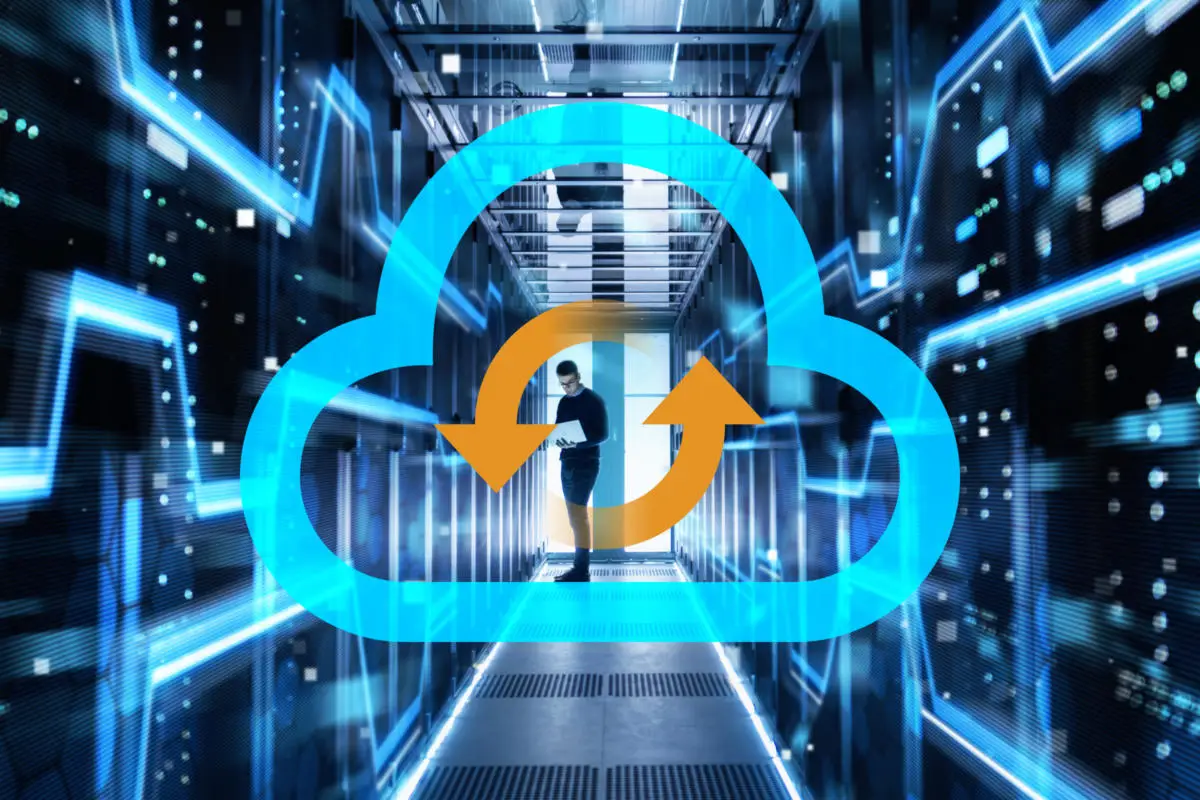Introduction
Welcome to the age of big data, where information is no longer scarce but rather abundant. In today’s digital world, organizations have access to an overwhelming amount of data that can be used to gain valuable insights and understanding. This data, known as big data, is revolutionizing industries across the board, including customer experience. In this article, we will explore how big data can give businesses a competitive edge by improving customer experience.
Customer experience has become a top priority for businesses of all sizes. In fact, studies show that companies with a strong customer experience focus outperform their peers in terms of revenue growth and customer retention. With the rise of social media and online reviews, customers have more power than ever before to voice their opinions and share their experiences with others. This means that delivering a positive and personalized customer experience is essential for business success.
So, what exactly is big data? In simple terms, it refers to the vast amounts of structured and unstructured data that is generated by customers, devices, and various other sources. This data includes online transactions, social media interactions, customer reviews, browsing patterns, and much more. Big data is characterized by its volume, velocity, and variety. It is too massive and complex to be analyzed using traditional data processing methods.
The importance of customer experience cannot be understated. Businesses that prioritize customer satisfaction and loyalty are more likely to thrive in today’s competitive landscape. Customers expect personalized, seamless, and proactive interactions at every touchpoint. This is where big data analytics come into play. By harnessing the power of big data, businesses can gain valuable insights into customer behavior, preferences, and needs.
Throughout this article, we will explore different ways in which big data can improve customer experience. From collecting and analyzing data to personalizing the customer journey, anticipating customer needs, and enhancing real-time customer support, big data has the potential to transform the way businesses interact with their customers. By leveraging big data, businesses can make better-informed decisions and deliver exceptional customer experiences, ultimately increasing customer satisfaction and loyalty.
What is Big Data?
Before delving into how big data can improve customer experience, let’s first understand what big data actually means. Big data refers to the vast amount of data that is generated, collected, and stored by businesses and individuals. It encompasses both structured data, which can be organized and easily processed, and unstructured data, which includes text, images, videos, social media posts, and more.
The defining characteristics of big data are commonly referred to as the “Three Vs”: volume, velocity, and variety. Volume refers to the sheer size of the data being generated. With the explosion of digital technologies and interconnected devices, the amount of data being produced is growing exponentially. This includes data from online transactions, social media interactions, website traffic, customer feedback, and much more.
Velocity refers to the speed at which data is being generated and needs to be processed. In today’s fast-paced world, data is being generated in real-time or near-real-time. This requires businesses to have systems and processes in place that can capture and analyze data in a timely manner, allowing for proactive and timely decision-making.
Variety refers to the different types and sources of data that make up big data. As mentioned earlier, big data includes structured data such as customer transaction records and website analytics, as well as unstructured data such as customer reviews, social media posts, and sensor data from Internet of Things devices. The variety of data sources adds complexity to the analysis process.
Big data analytics involves collecting, organizing, and analyzing large datasets to extract meaningful insights and patterns. Traditional data processing methods are often inadequate for handling big data due to its size and complexity. Therefore, businesses need advanced tools and technologies, such as machine learning algorithms and data visualization software, to make sense of big data and derive actionable insights.
By utilizing big data analytics, businesses can gain a deeper understanding of customer behavior, preferences, and needs. They can identify trends, predict customer churn, personalize marketing campaigns, optimize pricing strategies, improve product design, and much more. Big data has the potential to revolutionize the way businesses operate and interact with their customers.
In the next sections, we will explore how leveraging big data can specifically enhance the customer experience. From personalizing the customer journey to anticipating customer needs and providing real-time support, big data can enable businesses to deliver exceptional experiences that meet and exceed customer expectations.
The Importance of Customer Experience
Customer experience has become a key differentiator in today’s competitive business landscape. It refers to the overall perception and impression a customer has during and after interacting with a brand, product, or service. A positive customer experience can result in increased customer satisfaction, loyalty, and advocacy, while a negative experience can drive customers away and damage a company’s reputation.
The importance of customer experience cannot be overstated. Numerous studies have shown that customers are willing to pay more for a product or service if they have a positive experience with a company. In fact, a report by PwC found that 73% of consumers consider customer experience to be an important factor in their purchasing decisions.
Furthermore, delivering a great customer experience can lead to customer loyalty and repeat business. Customers who have positive experiences are more likely to become brand advocates, recommending the company to their friends, family, and colleagues. On the other hand, a negative experience can have severe repercussions, as dissatisfied customers are more likely to share their experiences through online reviews and social media, potentially damaging a company’s reputation.
In addition, customer experience is closely tied to customer retention. When customers have a positive experience, they are more likely to remain loyal and continue doing business with the company. According to research by Temkin Group, customers who have had a great experience are 3.5 times more likely to repurchase from the company compared to those who had a poor experience.
Moreover, in today’s digital era, customers have more avenues to interact with companies and voice their opinions. Social media platforms have given customers a powerful voice, allowing them to share their experiences, both positive and negative, with a wide audience. Companies that can meet and exceed customer expectations are more likely to succeed in this environment, as positive online reviews and recommendations can significantly boost brand visibility and credibility.
Ultimately, customer experience is about building and nurturing strong relationships with customers. It’s about understanding their needs, addressing their pain points, and providing personalized and seamless interactions at every touchpoint. By investing in delivering exceptional customer experiences, businesses can create a competitive advantage, foster customer loyalty, and drive long-term growth and profitability.
In the following sections, we will explore how big data can play a crucial role in improving customer experience. By leveraging the power of data analytics, businesses can gain valuable insights into customer behavior and preferences, allowing them to deliver personalized experiences that delight and retain customers.
How Big Data Can Improve Customer Experience
Big data has the potential to revolutionize the way businesses interact with their customers and enhance the overall customer experience. By harnessing the power of data analytics, companies can gain valuable insights into customer behaviors, preferences, and needs, allowing them to deliver personalized experiences that delight and retain customers.
Collecting and analyzing data is the first step in utilizing big data to improve customer experience. By capturing and storing customer data from various touchpoints, such as online transactions, website interactions, and social media engagements, businesses can build a comprehensive understanding of their customers. With the help of advanced analytics tools, companies can analyze this data to identify patterns, trends, and customer segments.
Personalizing the customer journey is a key way that big data can improve the customer experience. By leveraging insights from data analytics, businesses can tailor their marketing messages, product recommendations, and offers to meet individual customer preferences. This personalization creates a more relevant and engaging experience for the customer, increasing their satisfaction and likelihood to engage with the brand.
Anticipating customer needs is another powerful application of big data in improving customer experience. By analyzing past purchase history, browsing behavior, and customer interactions, businesses can identify patterns and predict future needs. This allows companies to proactively offer relevant products or services, reducing the customer’s effort in finding what they need and enhancing overall satisfaction.
Real-time customer support is another area where big data can make a significant impact on the customer experience. By leveraging real-time data analytics, businesses can identify customer issues, complaints, or inquiries in real-time and provide immediate assistance. This can be done through chatbots, live chat support, or proactive outreach. By resolving customer issues promptly and effectively, businesses can enhance customer satisfaction and loyalty.
Furthermore, big data can improve product development by providing valuable insights into customer preferences and pain points. By analyzing customer feedback, online reviews, and market trends, businesses can identify areas for improvement and develop products or features that better meet customer needs. This customer-centric approach to product development helps businesses stay ahead of the competition and deliver products that truly resonate with their target audience.
Ultimately, leveraging big data to improve customer experience leads to improved customer satisfaction and loyalty. By understanding and meeting customer needs, providing personalized interactions, and offering real-time support, businesses can create meaningful and memorable experiences that keep customers coming back.
In the next sections, we will explore the specific strategies and applications of big data in collecting and analyzing customer data, personalizing the customer journey, anticipating customer needs, providing real-time support, and enhancing product development. These strategies will showcase how big data can be implemented to drive exceptional customer experiences.
Collecting and Analyzing Data
Collecting and analyzing data is a critical step in leveraging the power of big data to improve customer experience. By capturing and storing data from various sources, businesses can gain insights into customer behaviors, preferences, and needs. This data can then be analyzed to uncover patterns, trends, and customer segments, enabling businesses to make data-driven decisions that enhance the customer experience.
The process of collecting data starts with identifying the touchpoints where customer interactions occur. This can include online transactions, website visits, social media interactions, customer service interactions, and more. By leveraging various data collection techniques such as web analytics, customer surveys, and social media monitoring, businesses can gather a wealth of information about their customers.
Once the data is collected, the next step is to analyze it to extract meaningful insights. This is where advanced analytics tools and techniques come into play. Businesses can use data mining, machine learning, and predictive analytics to uncover valuable patterns and trends in the data. Through data visualization techniques, such as charts and graphs, businesses can make it easier to understand and interpret the data.
One of the key advantages of big data analytics is the ability to analyze both structured and unstructured data. While structured data, such as customer transaction records, is relatively easy to analyze, unstructured data, such as customer reviews and social media posts, presents unique challenges. However, with the help of natural language processing and sentiment analysis, businesses can extract valuable insights from unstructured data, providing a more comprehensive understanding of customer sentiment and preferences.
By effectively collecting and analyzing data, businesses can gain a deeper understanding of their customers. They can identify customer preferences, purchasing behavior, and engagement patterns. This information can guide businesses in making strategic decisions, such as improving product offerings, optimizing marketing campaigns, and enhancing customer service processes.
Additionally, when it comes to analyzing data, it is important to ensure the data is accurate and reliable. Data validation and quality assurance processes should be in place to verify the integrity and consistency of the data. This ensures that the insights derived from the analysis are based on accurate information, enabling businesses to make informed decisions that positively impact the customer experience.
Overall, collecting and analyzing data is the foundation for utilizing big data to improve customer experience. By leveraging the power of data analytics, businesses can gain valuable insights into customer behaviors and preferences. This enables them to make data-driven decisions, deliver personalized experiences, and ultimately enhance the overall customer experience.
Personalizing the Customer Journey
One of the key ways that big data can improve the customer experience is by personalizing the customer journey. Customers today expect tailored and relevant experiences that meet their individual needs and preferences. By leveraging the power of big data, businesses can gather insights into customer preferences, behaviors, and purchase history, allowing them to create personalized experiences that resonate with each customer.
Personalization starts from the moment a customer interacts with a brand or visits a website. With the help of data analytics, businesses can track customer behavior and gather information about their preferences, such as the products they browse, the articles they read, and the actions they take on the website. This data can be used to provide personalized recommendations for products or services that align with the customer’s interests and needs.
Furthermore, big data enables businesses to segment their customer base and create targeted marketing campaigns. By analyzing customer data, businesses can identify specific customer segments based on demographics, behavior, and preferences. This segmentation allows companies to tailor their messaging and promotions to each customer segment, increasing the relevancy and effectiveness of their marketing efforts.
Personalization also extends to post-purchase interactions. By analyzing customer feedback, online reviews, and past purchase history, businesses can identify opportunities to provide personalized follow-up communication. For example, customers who have recently purchased a product may receive personalized emails with tips on how to maximize the use of their purchase or recommendations for related products that might be of interest to them.
Moreover, with the help of big data, businesses can personalize the customer support experience. By analyzing customer preferences and past interactions, companies can offer customized support options that align with the customer’s preferred communication channels or language. This can range from chatbots and self-service portals to live chat support or personalized phone assistance.
Ultimately, personalizing the customer journey enhances the overall customer experience by making interactions more relevant, meaningful, and engaging. When customers feel understood and valued, they are more likely to be satisfied, loyal, and advocate for the brand.
It is important to note that personalization must be done ethically and with the customer’s consent. Respecting customer privacy and data security is paramount. Transparency and clear communication about how customer data is used and protected are essential in building trust with customers.
By leveraging the power of big data analytics, businesses can create personalized experiences at every touchpoint of the customer journey. This personalization not only enhances customer satisfaction and loyalty but also drives increased engagement and conversions. As customers continue to seek seamless and tailored experiences, personalizing the customer journey becomes a critical strategy for business success in today’s competitive landscape.
Anticipating Customer Needs
Anticipating customer needs is a powerful strategy that can enhance the customer experience and drive customer satisfaction and loyalty. By leveraging the power of big data, businesses can analyze customer behaviors, preferences, and purchase history to gain valuable insights into what customers are likely to need in the future. This allows companies to proactively meet customer needs and exceed their expectations.
One way that big data can help in anticipating customer needs is by analyzing past purchase history. By examining customer transaction data, businesses can identify patterns and trends in customer behavior. They can determine which products or services are often purchased together or at certain times, allowing them to anticipate future needs and make relevant recommendations. For example, if a customer regularly purchases coffee beans, they may be in need of a new coffee grinder, which the company can proactively suggest.
In addition to purchase history, businesses can also analyze customer browsing behavior on their website. By tracking the products or services customers are viewing, businesses can gain insights into their interests and potential future needs. Similarly, analyzing search terms or filtering options that customers use can provide valuable information on their preferences and intentions.
Social media interactions can also be a valuable source of data for anticipating customer needs. By monitoring customer conversations, mentions, and hashtags on social media platforms, businesses can gather insights into customer preferences and discussions. This real-time data can help businesses identify emerging trends or customer pain points, enabling them to take proactive measures to address these needs.
Machine learning algorithms can play a critical role in anticipating customer needs. By analyzing historical customer data, these algorithms can identify patterns and correlations that humans might not detect. These insights can then be used to predict future customer needs and preferences. For example, a grocery store might use machine learning algorithms to analyze customer purchase history and identify which customers are likely to need certain items in the near future, such as diapers or pet food.
In the era of big data, businesses have an unprecedented opportunity to gain a deep understanding of their customers and anticipate their needs. By leveraging the power of data analytics, businesses can proactively recommend relevant products or services, provide timely solutions to customer pain points, and offer personalized experiences that make customers feel understood and valued.
When businesses can anticipate customer needs and offer timely solutions, they not only enhance the customer experience but also drive customer satisfaction and loyalty. Customers appreciate companies that go the extra mile to understand and meet their needs before they even express them. Anticipating customer needs is a proactive approach that builds trust, fosters loyalty, and sets businesses apart from their competitors.
In the following sections, we will delve into specific strategies and examples of how big data can be utilized to anticipate customer needs and provide proactive solutions. These strategies will demonstrate how businesses can leverage data analytics to stay one step ahead of their customers, creating a truly exceptional customer experience.
Real-time Customer Support
Providing efficient and effective customer support is crucial for delivering an exceptional customer experience. With the help of big data analytics, businesses can offer real-time customer support that addresses customer needs promptly and accurately. This proactive approach to customer service can lead to increased customer satisfaction, loyalty, and advocacy.
Big data can empower businesses to implement real-time customer support by analyzing customer data and identifying issues or inquiries in real-time. By monitoring customer interactions across various channels such as phone calls, emails, chatbots, and social media, businesses can detect and respond to customer needs as they arise. This allows companies to provide immediate assistance and resolve customer issues in a timely manner.
One way that big data can enable real-time customer support is through the use of chatbots and virtual assistants. By analyzing customer inquiries and responses, businesses can train chatbot algorithms to understand and respond to commonly asked questions. Chatbots can provide instant answers and solutions 24/7 without the need for human intervention, ensuring customers receive immediate assistance regardless of the time or day.
Real-time data analytics can also enable businesses to identify trending issues or complaints among customers. By analyzing customer feedback, social media posts, and online reviews, companies can identify common pain points and address them proactively. This allows businesses to take pre-emptive measures to prevent issues from escalating, ultimately improving the overall customer experience.
In addition to proactive issue resolution, big data can also help businesses provide personalized real-time support. By analyzing customer data and preferences, businesses can customize the support experience to align with individual customer needs. For example, if a customer prefers email communications over phone calls, businesses can ensure that support requests are prioritized and handled through the customer’s preferred channel.
Furthermore, big data analytics can optimize the routing and allocation of customer support resources. By analyzing customer data, businesses can determine the most appropriate support agent or team member to handle a specific inquiry or issue. This ensures that customers are connected to the right person with the necessary expertise, resulting in quicker and more satisfactory resolutions.
By leveraging real-time customer support enabled by big data analytics, businesses can address customer needs promptly, effectively, and in a personalized manner. This level of responsiveness and tailored support enhances the overall customer experience, leading to increased customer satisfaction, loyalty, and advocacy.
In the next sections, we will explore specific examples and strategies of how big data can be utilized to provide real-time customer support. From chatbots and virtual assistants to sentiment analysis and trend detection, these strategies will showcase how big data can transform the customer support process, ultimately improving the customer experience.
Enhancing Product Development
Big data plays a crucial role in enhancing product development by providing valuable insights into customer preferences, market trends, and potential areas for improvement. By leveraging the power of data analytics, businesses can make informed decisions, optimize product offerings, and create innovative solutions that better meet customer needs.
One way that big data enhances product development is through the analysis of customer feedback and reviews. By monitoring customer sentiments expressed in online reviews and social media posts, businesses can gain valuable insights into what customers like or dislike about their products. This feedback can be used to identify areas for improvement and inform the product development roadmap, ensuring that changes and updates are aligned with customer preferences.
Furthermore, big data analytics can help businesses identify emerging market trends and opportunities. By analyzing market data, competitor insights, and customer behavior, businesses can spot gaps in the market or emerging customer needs that can be addressed with new product offerings. This analysis enables businesses to stay ahead of the competition and develop products that are in line with current market demands.
Data analytics can also be utilized to optimize product features and design. By analyzing user behavior data, such as how customers interact with products or which features are most commonly used, businesses can identify opportunities to enhance the user experience. For example, analyzing how customers navigate through an e-commerce website can provide insights to improve the user interface and streamline the purchase process.
Additionally, big data can help businesses identify potential upsell or cross-sell opportunities. By analyzing customer purchase history, businesses can identify which products are frequently purchased together or which products are commonly upgraded or replaced over time. This information can guide businesses in developing complementary products or offering personalized upgrade options, increasing customer value and satisfaction.
Big data can also enhance the product development process by enabling rapid prototyping and iterative design. By analyzing real-time user data and feedback, businesses can quickly iterate on product prototypes, making necessary adjustments based on actual user behavior and preferences. This approach reduces the time and cost associated with traditional product development cycles and ensures that the final product meets customer expectations.
Ultimately, big data empowers businesses to make data-driven decisions throughout the product development lifecycle. By leveraging customer insights, market trends, and user behavior data, businesses can create products that are tailored to customer needs, offer a seamless user experience, and align with market demands. This enhances the overall customer experience and increases the likelihood of product success in the market.
In the following sections, we will explore specific strategies and examples of how big data can be utilized to enhance product development. From customer feedback analysis to market trend identification and iterative design, these strategies will showcase how big data can transform the product development process, resulting in innovative and customer-centric solutions.
Improving Customer Satisfaction and Loyalty
Improving customer satisfaction and loyalty is a primary goal for businesses, and big data analytics plays a pivotal role in achieving this. By leveraging the power of data analytics, businesses can gain valuable insights into customer preferences, behaviors, and needs, enabling them to make informed decisions and deliver personalized experiences that enhance customer satisfaction and foster long-term loyalty.
One way that big data improves customer satisfaction and loyalty is through personalized marketing and communication. By analyzing customer data, businesses can segment their customer base and tailor marketing messages to meet individual preferences and needs. Personalized marketing campaigns not only increase the relevance and effectiveness of communication but also make customers feel valued and understood.
Moreover, big data enables businesses to anticipate customer needs and proactively address them. By analyzing customer behavior and historical data, businesses can predict when a customer may be due for a purchase or require assistance. By reaching out to customers at the right time with relevant offers or proactive support, businesses can enhance satisfaction and show customers they are valued.
With the help of big data analytics, businesses can create targeted customer loyalty programs. By analyzing customer purchase history, preferences, and engagement patterns, businesses can identify loyalty opportunities and reward customers for their continued support. This personalized approach to loyalty programs not only increases customer satisfaction but also strengthens the emotional connection between the customer and the brand.
Big data can also improve customer satisfaction and loyalty through better customer service experiences. By capturing and analyzing customer interactions and feedback, businesses can identify pain points, service gaps, or areas for improvement. Real-time data analytics can enable businesses to resolve customer issues promptly and effectively, resulting in higher customer satisfaction and increased loyalty.
Furthermore, big data provides businesses with insights into customer churn and engagement. By analyzing customer behavior and usage patterns, businesses can identify at-risk customers and take proactive measures to retain them. For example, businesses can reach out to customers who have not engaged with their products or services in a while and offer personalized incentives or recommendations to rekindle their interest and loyalty.
Big data analytics can also be utilized to understand and optimize the customer journey. By analyzing customer data at each touchpoint, businesses can identify friction points, streamline processes, and remove barriers that may hinder the customer experience. This enhancement in the customer journey leads to higher satisfaction and increased loyalty, as customers have smooth and seamless interactions with the brand.
Ultimately, by utilizing big data analytics to improve customer satisfaction and loyalty, businesses can create a customer-centric culture that brings customers back again and again. The insights derived from data analytics allow businesses to understand their customers’ preferences, anticipate their needs, and deliver personalized experiences that foster loyalty and advocacy.
In the following sections, we will delve into specific strategies and examples of how big data can be utilized to improve customer satisfaction and loyalty. From personalized marketing to targeted loyalty programs and optimized customer service experiences, these strategies will highlight the power of big data in enhancing customer satisfaction and fostering long-term loyalty.
Conclusion
In today’s digital age, big data has emerged as a game-changer in the quest to improve customer experience. The abundance of data and the advanced analytics techniques available allow businesses to gain deep insights into customer behavior, preferences, and needs. By leveraging big data, businesses can deliver personalized experiences, anticipate customer needs, provide real-time support, and enhance product development, all of which contribute to improved customer satisfaction and loyalty.
Collecting and analyzing data is the first step in utilizing big data for improving customer experience. By capturing data from various touchpoints and employing advanced analytics tools, businesses can uncover valuable insights that inform decision-making and drive customer-centric strategies. By understanding customer preferences and behaviors, businesses can personalize the customer journey, offer targeted marketing campaigns, and provide proactive customer support.
Personalization of the customer journey is a key aspect of utilizing big data for enhancing the customer experience. By tailoring interactions and recommendations based on customer data, businesses can create relevant and engaging experiences that resonate with individual customers. This personal touch fosters customer satisfaction and loyalty, as customers feel understood and valued by the brand.
Furthermore, big data enables businesses to anticipate customer needs by analyzing past purchase history, browsing behavior, and social media interactions. By predicting future needs, businesses can provide proactive solutions and recommendations, making the customer experience more seamless and satisfying.
Real-time customer support is another area where big data has a significant impact on customer experience. By monitoring and analyzing customer interactions in real-time, businesses can identify and resolve issues promptly, providing immediate assistance and reducing customer effort. This level of responsiveness enhances customer satisfaction and instills confidence in the brand.
Big data also plays a critical role in product development. By analyzing customer feedback, market trends, and user behavior data, businesses can optimize existing products and identify opportunities for innovation. This customer-centric approach ensures that products meet customer needs and expectations, leading to higher satisfaction and loyalty.
Ultimately, by leveraging big data analytics for improving customer satisfaction and loyalty, businesses can establish a strong competitive advantage. Big data provides the insights needed to create personalized experiences, anticipate customer needs, and deliver exceptional support. The result is a positive and memorable customer experience that not only drives customer loyalty but also boosts brand reputation and bottom-line success.
As technology continues to advance and customer expectations evolve, the role of big data in shaping customer experience will only grow. Businesses that embrace the power of big data and leverage it to enhance the customer experience will position themselves ahead of the competition, thriving in an era where customer satisfaction and loyalty are key drivers of success.

























